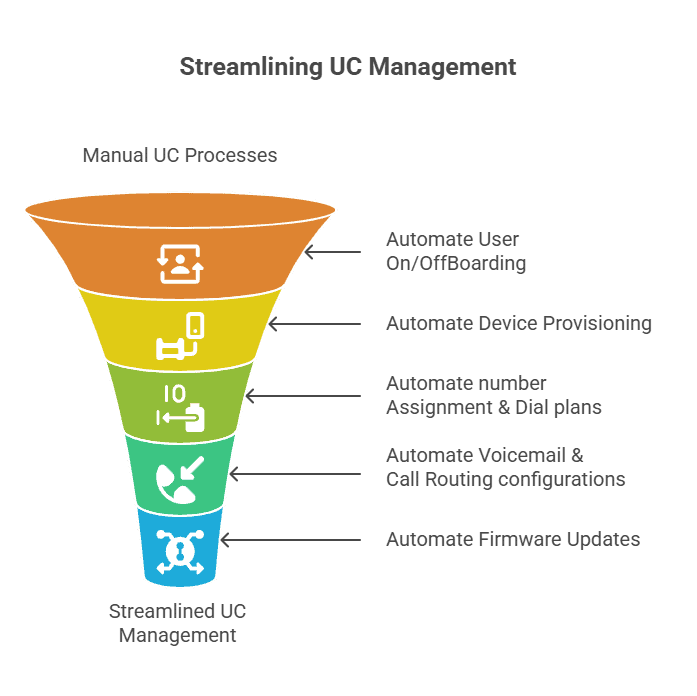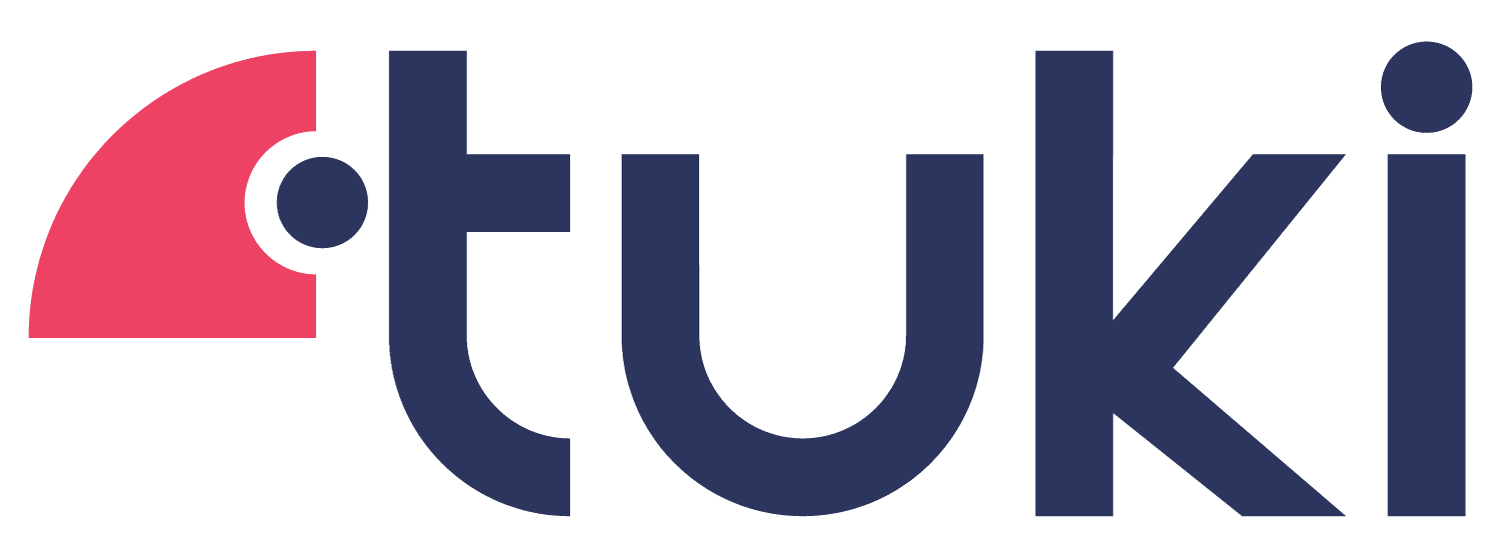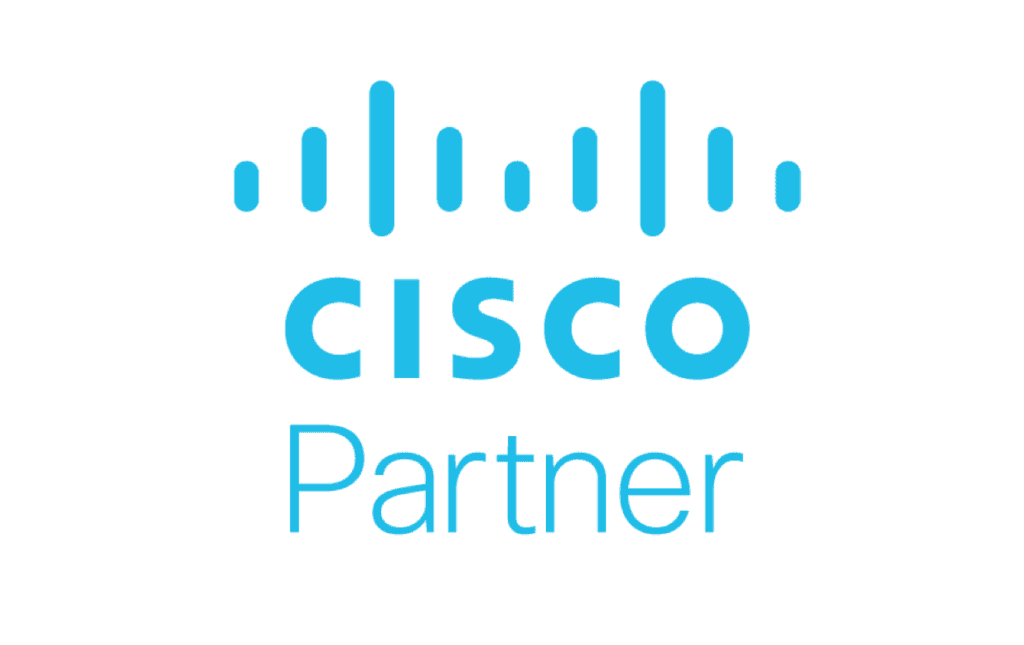Choosing the right UC management portal is critical for IT leaders seeking control, automation, and simplicity. This guide outlines the essential features, benefits, and differentiators to look for in a unified communications management system, with a spotlight on how Tuki makes UC management intuitive, secure, and scalable.
What Is a UC Management Portal?
A UC (Unified Communications) management portal is a centralized interface that enables IT teams to manage and automate voice, video, messaging, and collaboration services across their communications infrastructure. It bridges on-premise systems like Cisco CUCM and cloud platforms such as Webex Calling, enabling visibility, provisioning, configuration, and user lifecycle control in a single location.
Rather than relying on manual scripts or siloed interfaces for different services, UC management portals provide a unified view that empowers IT to streamline day-to-day operations, reduce errors, and deliver better service to users.
The best UC management systems offer automation, scalability, and intuitive UX – helping enterprises adapt quickly to hybrid or fully cloud-based environments without increasing IT workload.
Must-Have Features for IT Efficiency
- Automation of Routine Tasks
Manual provisioning and user updates create friction and are prone to errors. A modern UC management portal should automate:
- Real-Time Synchronization
Especially in hybrid environments, real-time sync with on-prem CUCM and cloud services (Webex Calling DI/MT) ensures that what IT sees in the portal reflects the actual system state. - Multi-Vendor and Hybrid UC Support
Enterprises increasingly operate across platforms. Your UC management system should support hybrid deployments and multiple vendors – Cisco, Microsoft, and others – while allowing flexibility across sites and geographies. - Intuitive User Interface
IT teams and even non-technical staff should be able to navigate the portal easily. The user interface must be clean, logical, and optimized for workflows, reducing the training curve and support reliance. - Role-Based Access Control (RBAC)
Security is non-negotiable. RBAC ensures that only the right personnel can perform specific functions, keeping your UC environment safe from unauthorized changes. - Audit Trails and Reporting
Every change, provisioning action, or workflow execution should be logged and available in an audit-ready format. This supports compliance and operational visibility. - API and Self-Service Capabilities
A good UC management portal should expose its capabilities via robust APIs – enabling integrations with ITSM, HRIS, and identity systems. It should also allow departments or helpdesks to self-service safely under policy.
Templates and Workflows
Pre-built and customizable templates make repetitive tasks scalable and consistent. Provisioning workflows should be rule-based and flexible for different use cases (e.g., contractors vs. full-time employees).
How Tuki Delivers Value with Centralized UC Management
Tuki’s UC management portal is built to simplify even the most complex environments. Designed for enterprise scale but intuitive enough for lean IT teams, it combines powerful automation with full visibility and security.
Here’s how Tuki stands out:
- Single View for On-Prem and Cloud: Tuki integrates with CUCM, Webex Calling MT/DI, and other UC platforms – giving IT a consolidated portal to manage the entire environment.
- Self-Service with Guardrails: Departments and helpdesks can execute predefined actions without risk. Role-based access and workflow policies maintain governance.
- Automated User Lifecycle Management: Tuki integrates with identity and HR systems to automate every step of the user lifecycle, from new hire to offboarding.
- Batch Operations at Scale: Whether onboarding 20 or 2,000 users, Tuki’s batch provisioning tools ensure consistency and speed.
- Hybrid UC Ready: With support for both on-premise CUCM and Cisco cloud platforms, Tuki enables seamless coexistence and gradual migration strategies.
- Advanced Analytics and Audit Logging: Every action is traceable. Tuki provides rich reporting for system health, provisioning trends, and usage insights.
Firmware Automation and Rollback: Tuki enables zero-risk firmware upgrades for Cisco devices, with automatic rollback if something goes wrong.
FAQs
What’s the difference between a portal and a platform?
A portal is typically the interface users interact with, whereas a platform includes the backend services, logic, APIs, and integrations that make the system function. Tuki delivers both: a clean portal and a robust underlying automation platform.
Can a portal support hybrid UC?
Yes, Tuki’s portal is designed to manage both on-premise and cloud-based systems simultaneously, making it ideal for hybrid UC strategies.
How does it improve user provisioning?
Tuki automates provisioning end-to-end, from integrating with HR systems to assigning extensions and devices, drastically reducing errors and saving time.











